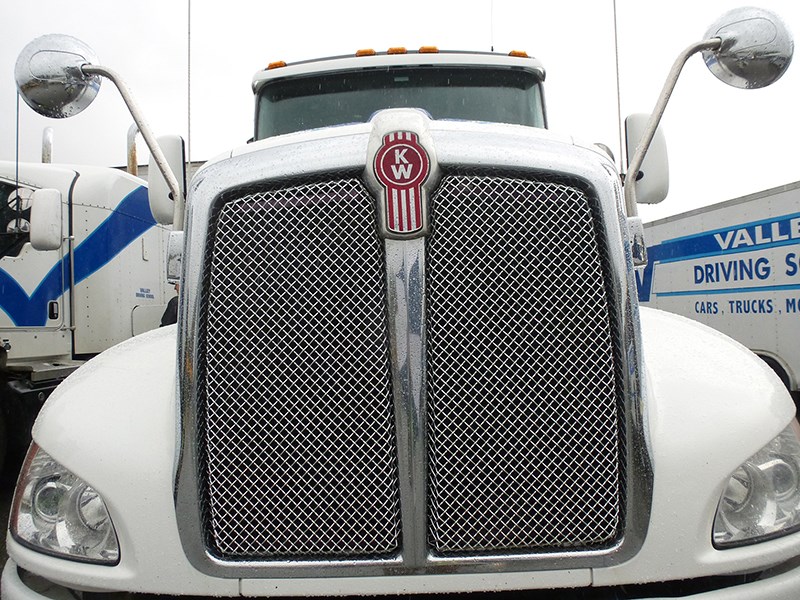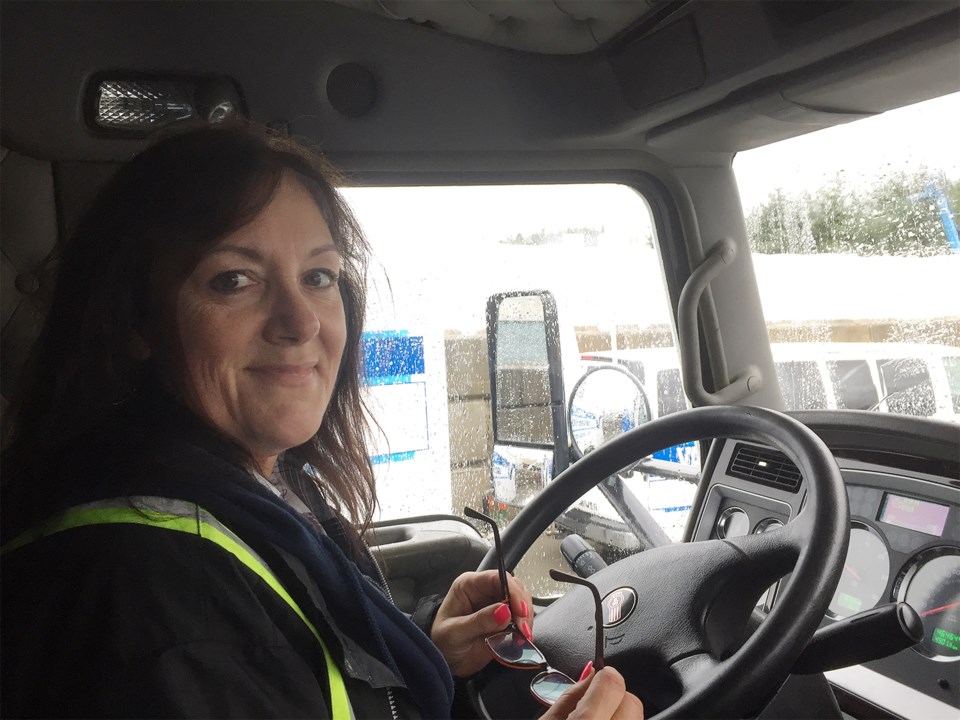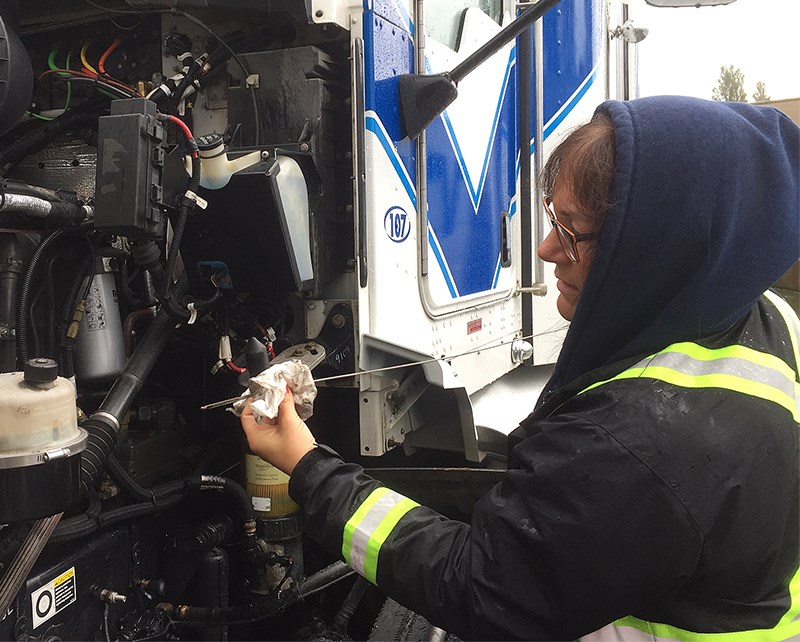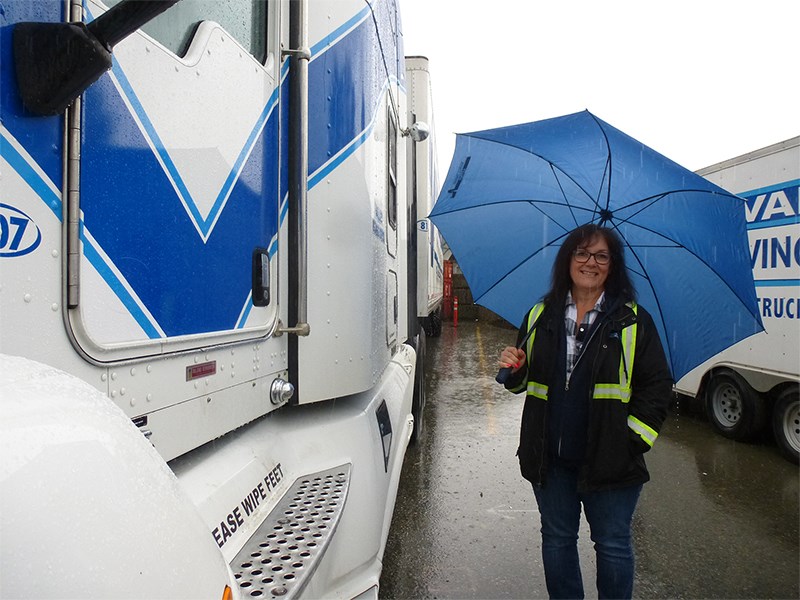Those big rigs you see cozying up to the yellow line to make a wide turn aren’t an obstacle to your day but part of BC's $64 million shipping industry and the lifeblood of the economy.
Yet for most drivers, those monstrous tractor-trailers are a pain to drive behind or next to.
Slow to get up hills, moving at turtle-like speeds into highway traffic, lane hogs when they turn a corner — they can be intimidating or irritating.
And In a crash with a small sedan or SUV, they can also be deadly.

But too many drivers appear to ignore these behemoths of the highway, cutting them off or plugging up their stopping space, just to save a few seconds.
It's a hazard of the road agrees, Greg Reeder, curriculum designer for Valley Driving School, which has a branch in Coquitlam and trains car and truck drivers.
“People will just go ‘that darn truck is in the way again,’ I’m late for work, not realizing everything they need for clothing and food and water and fuel has to be delivered on a daily basis otherwise their lives would be miserable. It would be nice if there was a little more thankfulness about the jobs they are doing for people,” said Reeder, who supports the Be Truck Aware safe driving campaign.
He wishes drivers would be safer around trucks, taking into consideration their need for a long stopping distance, their blind spot in front of the cab, the need to allow trucks to merge and recognizing that tractor-trailers need four or five lanes to turn a corner.
“The length for stopping in front of a truck is the length of a football field — and that is if they’re fully paying attention, and the roads are dry," Reeder says.

Cindy Brewer, an instructor resource manager at Valley Driving who trains Class 1 driving instructors, has seen plenty of risky behaviour in her 30 years on the road but believes it's just lack of attentiveness rather than malevolence.
For example, on a tour of local truck routes with the Tri-City News, a black Honda civic cut her off when he turned into her lane from a side street. He didn't even look back to see what was coming. Consequently, she has to be hyper aware at all times.
"I'm driving for everyone else," she says as she changes gears to get the heavy loaded semi-trailer up a hill.
Brewer, who met her husband on the road— she was hauling mushrooms and he crab when they met for coffee at a rest stop — says long haul trucking is not for everyone. Flexibility and patience are key.
She also sympathizes with car drivers who don't understand the space requirements of 70-foot-long trucks and the challenges of towing a fully loaded container up a hill.
"I get it, nobody wants to be in front of or behind a driving school truck," she jokes.
Powering the 2013 Kenworth tractor-trailer through the Braid Street connector on the Coquitlam border (virtual chaos with mid-day traffic), through to the narrow Front Street truck route in New Westminster to Lougheed Highway in Coquitlam, where deadly accidents have occurred near Riverview, Brewer is calm under pressure.
You can see her thinking through every move, such as when turning right she first signals to get into the left lane, then signals right to make a wide sweep for the turn, requiring four lanes in all, a standard move that would be a white-knuckle manoeuvre for most drivers.

Then she just keeps on going. "Our goal," she says, "is to keep rolling."
Hopefully, with a little more attention to their driving, cars and truck operators on B.C. roads will do the same.
The following tips have been provided as part of Be Truck Aware, Oct. 17-31.
Passenger vehicle drivers are urged to:
• Leave space: Large trucks need extra room to stop and to turn. Don't take away their turning or braking room.
• Don't merge too soon: When passing a truck, make sure you can see both its headlights in your rear-view mirror before merging back into the lane. If you merge too soon, the truck driver may not see you or be able to stop in time to avoid a crash.
• Be visible around trucks: Either slow down or move well ahead of large trucks to stay out of the truck driver's blind spots.
• Anticipate wide turns: Watch for trucks making wide swings to turn right. Never drive ahead in the right lane beside a turning truck.
Truck drivers are are urged to:
• Ensure brakes and tires are in top condition to minimize stopping distances.
• Adjust speed and driving in poor weather and road conditions.
• Stay sharp and focused by getting plenty of rest and eliminating in-cab distractions.
• Make sure loads are well-balanced and secure to reduce the likelihood of a crash and its impact on others.



